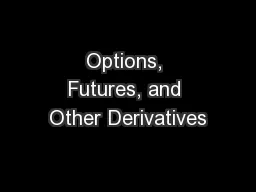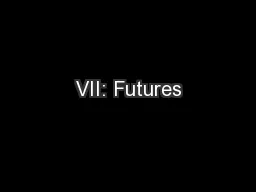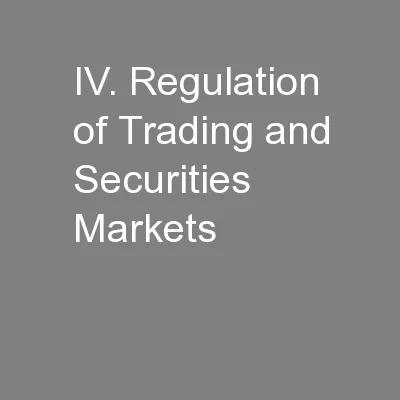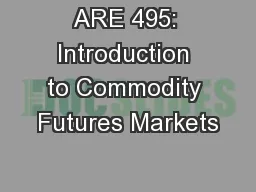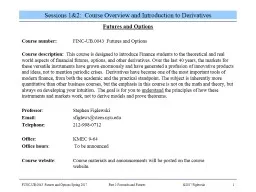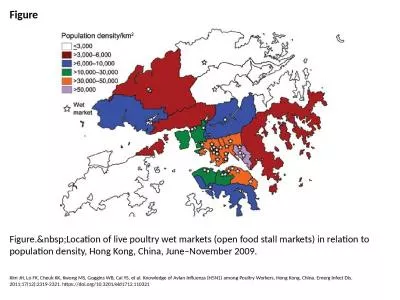PPT-1 Futures Topic 10 I. Futures Markets
Author : briana-ranney | Published Date : 2018-10-22
2 A Forward vs Futures Markets 1 Forward contracting involves a contract initiated at one time and performance in accordance with the terms of the contract occurring
Presentation Embed Code
Download Presentation
Download Presentation The PPT/PDF document "1 Futures Topic 10 I. Futures Markets" is the property of its rightful owner. Permission is granted to download and print the materials on this website for personal, non-commercial use only, and to display it on your personal computer provided you do not modify the materials and that you retain all copyright notices contained in the materials. By downloading content from our website, you accept the terms of this agreement.
1 Futures Topic 10 I. Futures Markets: Transcript
Download Rules Of Document
"1 Futures Topic 10 I. Futures Markets"The content belongs to its owner. You may download and print it for personal use, without modification, and keep all copyright notices. By downloading, you agree to these terms.
Related Documents


